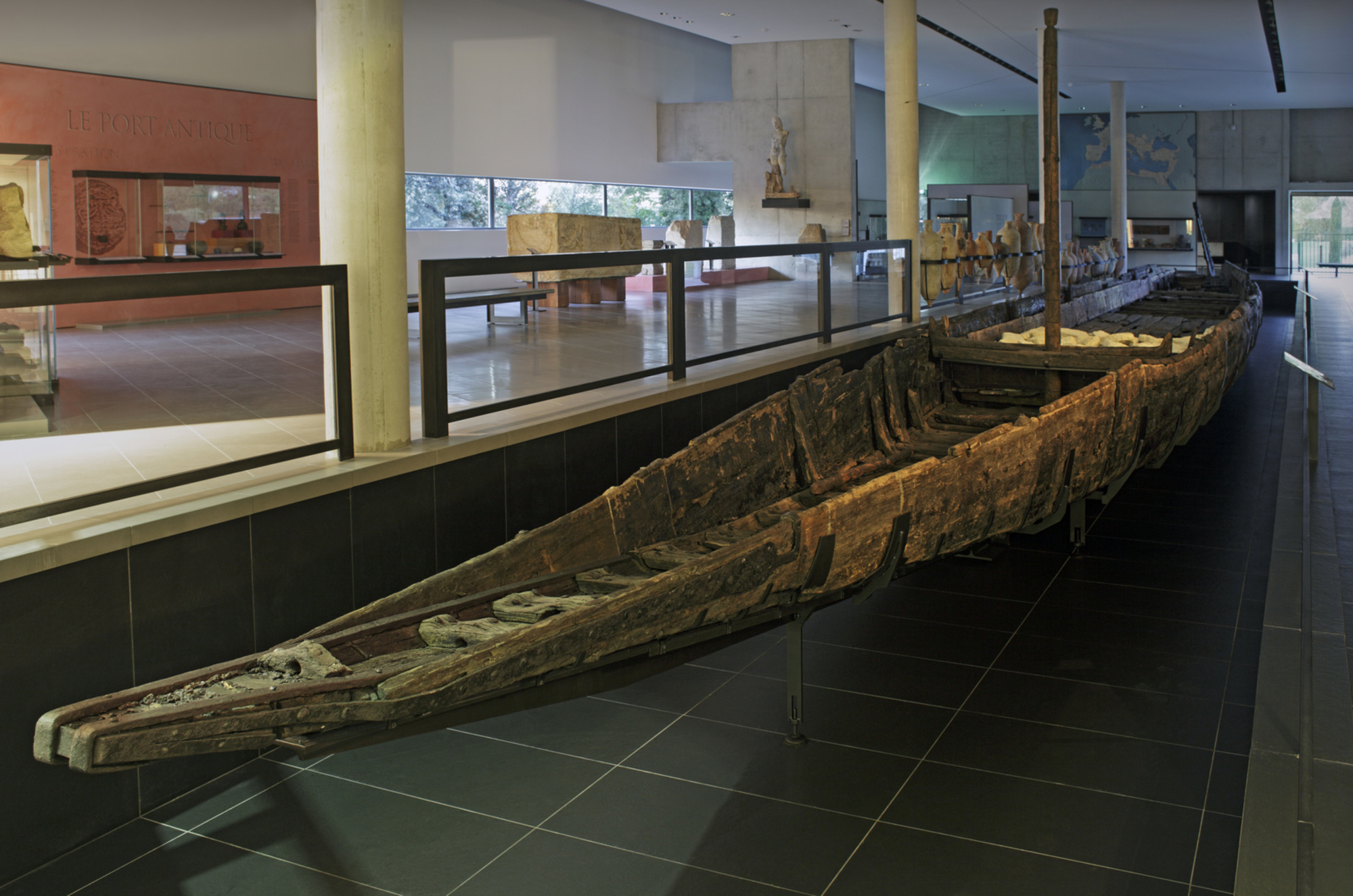
- Home
- A great scientific adventure
- From seabed to museum display
- Raised from the water : Port-Vendres 1 and Arles-Rhône 3
Archaeologists sometimes decide to lift a wreck out of the water in order to study it more thoroughly. It is a long and complex operation to further our knowledge of the past.
Wreck in good general condition, seeks museum
First reported in 1929 and explored in the 1960s, the Port-Vendres 1 wreck was scheduled for a rescue excavation in 1973 because of pending harbour works. Pressed for time, the excavating archaeologists decide to salvage it. The hull (13.9 m long, 7.5 m beam) was raised, towed and cut into two sections which were then brought to Fort Saint Jean, at the time DRASSM headquarters in Marseilles, for a comprehensive examination.
The question of how to preserve ‘sodden wood’ was concerning specialists of the day. They opted for a technique which appeared promising in the 1970s, but the results were not entirely convincing. Comprising more than 550 parts, the wreck, which had been forgotten for many years, was reassembled in 2015 thanks to the support of the Gulf of Lion Marine Park.
The boat dates from the late fourth to early fifth century and, today, is attracting considerable interest from local authorities which hope to put it on display in Port-Vendres.
Well-preserved barge finds a museum
A Gallo-Roman barge built for inland navigation was discovered in 2004 in the river Rhône and promptly designated Arles-Rhône 3. It was in remarkable condition thanks to the protection afforded by a blanket of mud, which rapidly accumulated, and its cargo of limestone blocks. The layer of sediment kept in place material culture which would subsequently enable archaeologists to understand what life was like aboard the barge.
The hull (31 m long, 3 m beam) was cut into three-metre sections before being raised. Each section was completely dismantled, examined and then sent to the ARC-Nucléart Laboratory in Grenoble. Returning to Arles in 2013, the wreck was reassembled and put on display in a purpose-built room of the city museum. Bouches-du-Rhône Council and the Ministry of Culture joined forces to achieve this ambitious project coordinated by DRASSM.
"I set up an archaeological repository in Agde, and in 1974 I raised her, Port-Vendres 1! I had desilted her back in 1958, the prettiest hull in the Mediterranean!” Yves Chevalier.





